While Smartphone cameras are improving vastly, many people are asking whether DSLR or mirrorless cameras are still worth buying. It seems that this debate is going to last for many years. To conclude an opinion about this debate, we have to go through the main qualities and differences between them.
In the following article, I’ll go over the pros and cons of smartphones and DSLR cameras to help you decide which one is better.
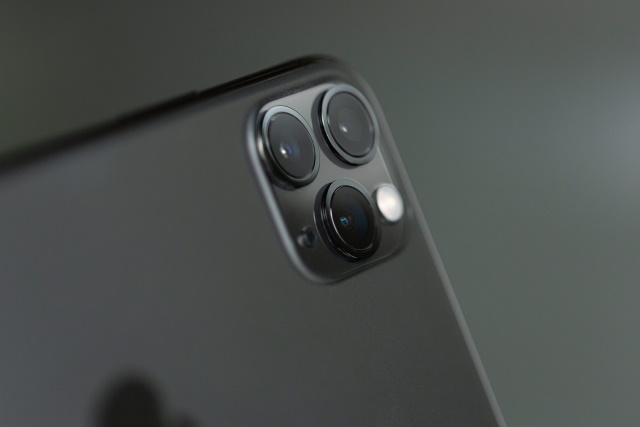
Photo by Torsten Dettlaff
Smartphone Cameras
Smartphone cameras are becoming powerful photography tools. They have essentially replaced point-and-shoot cameras. The camera in a smartphone is only one function besides many others (making phone calls, listening to music, surfing the web, etc.) which makes the smartphone incredibly essential and very convenient.
While older smartphones were using a single lens with a fixed focal length, now it is more common to see smartphones with multiple camera lenses. In addition, you can use clip-on lenses that allow your smartphone to be adapted for fisheye, macro, wide-angle, and telephoto photography.
Modern Smartphones also have faster lenses to allow for a greater amount of light to pass to the sensor. You can find an aperture value of f/2.2 in the new smartphone’s camera. These faster aperture values capture more light and can produce softer backgrounds for greater control over the depth of field.
These fast lenses when used with manual exposure (whether natively built into your phone or controlled using a third-party app) will give you more control over shutter speed, ISO, and JPEG or raw captures.
Many apps are available in the market that support using smartphone cameras and offer many editing features. One popular app that gives smartphone users a great deal of control in Lightroom CC, which enables users to shoot HDR images in Adobe’s DNG format, and can also output high-quality images for the web or small prints.
If you need flash for your shots, many phones are also now built with LED flash units.
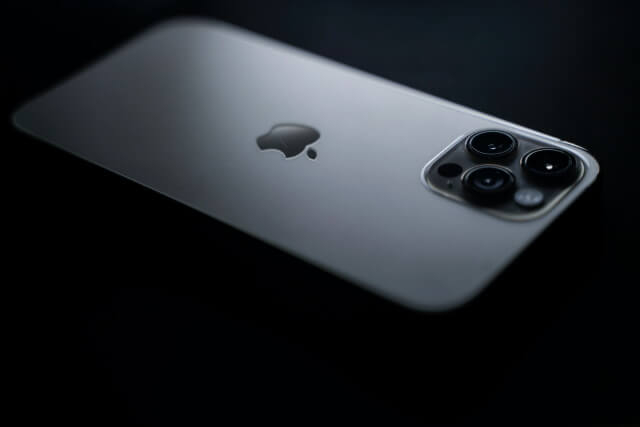
Photo by Akaaljotsingh Anandpuria
The advantages of smartphone cameras
- Smartphone cameras may not be the best when it comes to taking out printouts of photos. However, they are very handy when you want to capture the beauty around you spontaneously or when you want to take photos and store them on a laptop or computer. I think the biggest advantage of a smartphone camera is that you always have it with you. If you come across an unexpected moment you’d like to capture, you can just pull out your phone and take the shot
- Smartphones are highly portable, as they are much smaller than DSLRs and lighter.
- Smartphone cameras are easier to use than digital cameras.
- Smartphone cameras have an automatic backup feature, you can set your phone to automatically synchronize your mobile images with your cloud account. This way, every time you take a photo, not only will your photo be saved on your phone, but it will also be saved in the cloud. Therefore, you can access your photos from anywhere, even if you lose your smartphone.
- You can instantly share any video or image over social media with smartphones. To send files with the DSLR, even though they have connectivity options such as Bluetooth, Wi-Fi, etc, you have to connect the camera to a laptop, PC, or tablet.
- Smartphones’ cost ranges from affordable to expensive, and if we do a quality comparison, then a good quality DSLR camera is prohibitively expensive, much more than a smartphone. From the price point, a smartphone camera is good enough for those who are not into professional photography.
- Phone Cameras are better for Selfies, and they have bigger monitors.
The cons of smartphone camera
- Smartphones are designed to fit in your pocket. They aren’t designed to be comfortable and steady in the hand while taking photos. For most photographers, a smartphone’s handling is a problem to be dealt with rather than something to celebrate.
- Most of the challenges of smartphone photography boil down to size. For example, part of the reason smartphone cameras struggle so much with shooting in low light is because of how small the sensor is. because the sensor is so small, the pixels that capture light to create an image are also small. As a result, they don’t get to capture as much light as a camera with a bigger sensor and bigger pixels. This is why lighting is a big deal in mobile photography.
- With the size limitation of smartphone cameras, another problem comes: the camera’s ergonomics. Unlike dedicated cameras that are designed to be held tightly in the grips of your hands as you take photos, smartphones are not designed with photography as their main function and priority.
- Most smartphones do not offer optical zoom. Simply because the mechanics of creating a proper optical zoom lens require space, and space in a smartphone is already at a huge premium. For most phones, it simply makes more sense to use fixed focal length lenses and offer zoom via the digital method instead. The downside? digital zoom is essentially just cropping a photo, and that always results in a noticeable loss of detail.
- Because smartphones are designed to be compact, it isn’t possible to build them with the same sort of lenses you would find on a DSLR. Because of this limitation, a small built-in lens is the only option; which is inferior to a professional camera lens.
- The only control you can get over a phone camera flash is whether it is enabled, disabled, or set to auto. You can’t adjust the natively low intensity or the positioning. As a result, the frontal low-energy flash washes out the subjects in the foreground and keeps the background dark.
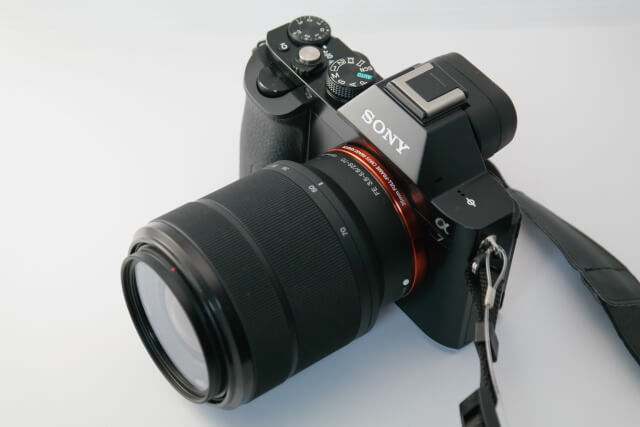
Photo by Pixabay
DSLR Camera
DSLR (Digital Single Lens Reflex) is considered a legacy camera design that was in use many decades ago. The design includes a mirror, which splits or directs the incoming light toward the optical viewfinder. It allows you to see an exact, optical view of the scene.
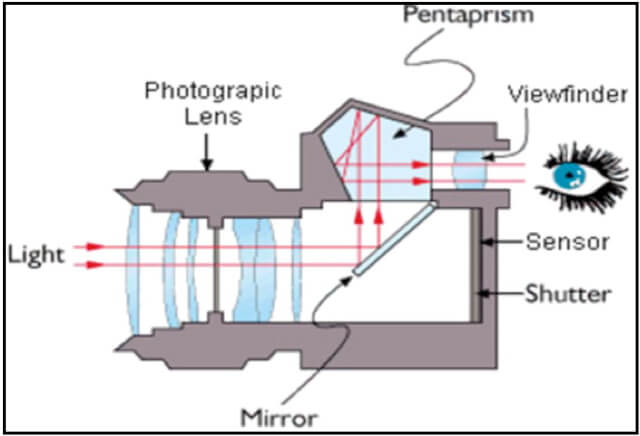
Most DSLR cameras have the option to change the lens. This means that you can fix different lenses onto your camera body for different uses. Such as a wide-angle lens for capturing interiors, a telephoto lens for taking pictures of subjects that are far away, and a macro lens for capturing small objects like insects.
The two most popular DSLRs (Canon EF and Nikon F) have over a thousand lenses available. These include lenses manufactured by the brand or third-party manufacturers like Sigma or Tamron.
In DSLRs with autofocus, a small portion of the incoming light actually passes through the main mirror. There, it hits the secondary mirror. This directs it down to the autofocus sensor.
When you press the shutter button to take a photo, the mirrors flip up. This enables light to hit the sensor. The shutter mechanism, right in front of the sensor, opens up. It exposes the image and closes down after a set amount of time. That time is called the shutter speed.
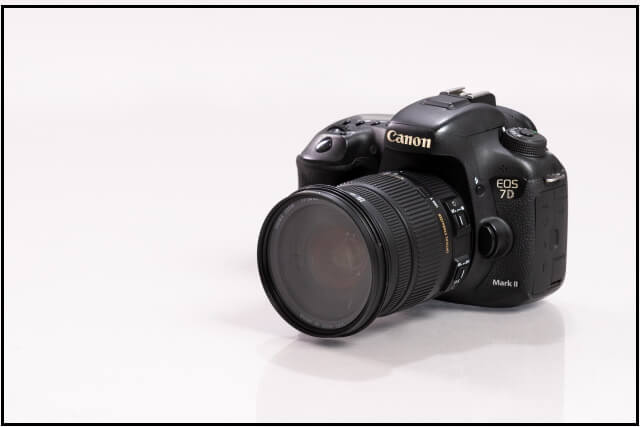
Photo by Vlado Krstevski
The advantages of DSLR cameras
- Handling and ergonomics: Because they are primarily designed for handheld photography, they’ve got excellent handling, especially in comparison to a smartphone. A DSLR camera has a protruding grip for the user’s right hand, often with depressions, ridges, and textured finishes to aid purchase and stability. With the user’s left hand gripping the lens barrel, not to mention a neck or shoulder strap providing a further point of stability, holding a DSLR comfortably and steadily is rarely a problem. The shutter button is placed so that the user’s right forefinger will comfortably rest on it during use, Other controls like ISO, shutter speed, autofocus, and exposure compensation are usually placed within easy reach of a finger.
- Optical zoom: The zoom in DSLR’s lens is achieved optically rather than digitally, and consequently no detail is lost when you zoom up close to make a far-off subject fill the frame. A standard zoom lens covers the wide-angle to the medium-telephoto range, making it ideal for shooting everything from a landscape to a portrait, while a telephoto zoom lens is ideal if you’re mainly shooting distant subjects (wildlife or sport, for example).
- Low-light performance: a DSLR camera sensor is much larger than a smartphone camera sensor. That gives DSLRs a big advantage concerning image quality and low-light performance. To achieve sharp, low-noise shots in dim indoor lighting or at night, you need a bigger sensor that can capture more light when used with a fast lens
- Dynamic range: Dynamic range is the difference between the brightest and darkest color tones that a camera is able to capture; having a high dynamic range means that images will display a greater tonal scope, bringing extra visual detail to the brightest and darkest areas of a photo or video. Again, due to the bigger sensor size, a DSLR camera can do much better. Smartphone uses bracketed shooting, merging several shots taken at different exposure settings into a single HDR image to reach a higher dynamic range. DSLRs can also do this, with the advantage of starting the process with better-quality shots.
- Shooting in harsh sunlight: Using a smartphone screen to compose a photo in bright light conditions is very difficult because of the glare on the screen. On the other hand, a DSLR has no such issues because of its optical viewfinder. You can place your eye up to the viewfinder and preview your shot ‘through the lens’, with the eyepiece shutting out any potentially distracting sunlight. With an optical viewfinder, you can also preview the depth of field. There is usually a small button located on the camera body near the lens mount to do this.
- Long battery life: The batteries that DSLRs use are very powerful and contribute to longer battery life.
- Weather sealing and durable build: The bodies will sport weather sealing and are very durably built
The cons of DSLR cameras
- Large and heavy: To house all of the components, DSLRs tend to be large, heavy, and generally bulky in size.
- Extra accessories: DSLRs come as body-only unless you purchase a kit (but even in kits, the lenses don’t tend to be very good). As such, you will need to invest even more money in extra lenses, external flashes, and other components for your camera.
- Less portability: Because you have to carry so much, the DSLR body, the lens(es), and accessories, the kit is less portable than a smartphone.
- Steep learning curve: Due to the manual nature and excess of features of DSLRs, they can be complex to the untrained.
- Ongoing maintenance and care: DSLRs require regular cleaning, maintenance, and care by professionals in order to operate properly.
Conclusion
The smartphone and the DSLR cameras serve different purposes. I find that DSLRs and smartphones complement each other. I don’t think smartphones will ever supersede cameras unless the size of their sensors increases, but they will always remain powerful tools.
When you try to compare the quality of the photo you cannot just use the number of pixels, but the size of the pixels is the most important here. The DSLR has a much bigger sensor, therefore, the pixels are much larger than the pixels in a smartphone. The result is that larger pixels capture more light, which brings out better and more accurate color. It also allows taking photos in a darker environment without using the software.
Technology rapidly evolves and, as smartphone cameras continue to improve, we can expect the same from DSLR systems. I think it is not entirely about which is technically better, but which is better for you.
Can’t afford to buy a brand-new lens or camera body?
Sometimes, buying a new lens or camera body can be very expensive for many people. However, Keh is a great option to get a used one at a reasonable price. Read the full review here.
Related posts
Why You Can’t Always Rely On A Smartphone For Professional Photography?
Thanks for reading, I hope you enjoyed the article, If case you have any questions just drop them below & I will be happy to answer you.
The featured photo by Steve Johnson
If you enjoy the site, don’t forget to subscribe, we will only inform you when a new article is posted.

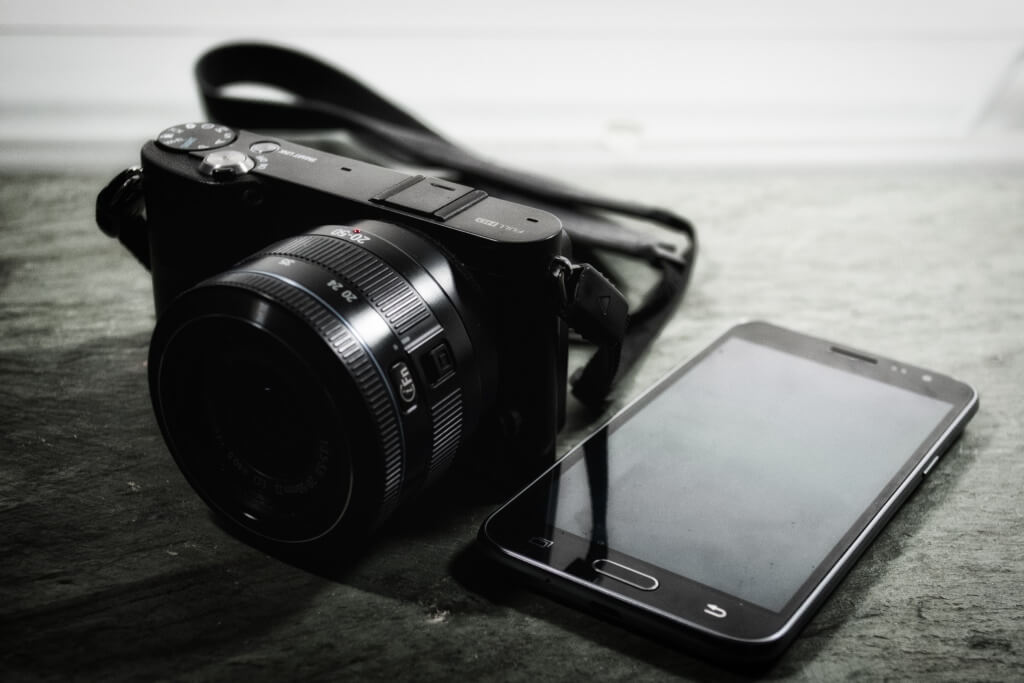




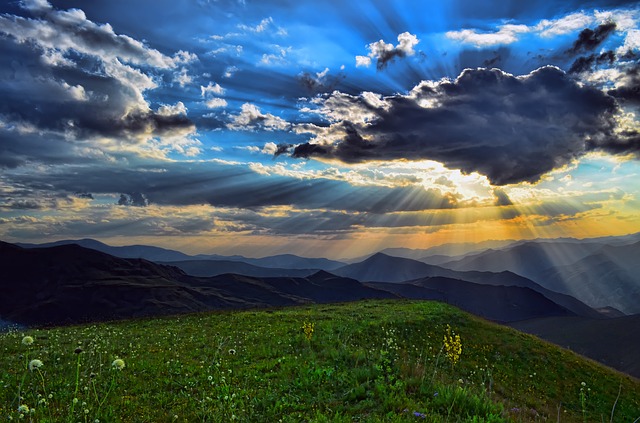



Thank you very much for this valuable detailed post about smart phone camera and DSLR camera. I actually use my iPhone camera to take photos. As you said, smart phone is really easy. But I prefer a DSLR camera. Because you can take good quality photos with it. And it has good zooming. Keep posting like this.
Thank you for your comment
Hi Ehab,
This is a highly informative post comparing smartphone and DLSR cameras with the pros and cons of each one. I appreciate the depth and thoroughness you have put in this post which is highly engaging to readers.
I have both cameras- Nikon and a smartphone camera. At weddings and occasions, I carry the Nikon and its stand to use it as necessary. They definitely take better pictures. Smartphones are always there to capture a quick snap or two. I will have a few questions if you entertain them.
What is the best DLSR camera setting that a beginner should know?
What are some good practical photography books that teach me skills for a DLSR?
Glad you like the article and thanks for the comment. For the camera setting, I recommend reading the following post:
Canon Metering Modes Explained- How To Get A Proper Exposure Exposure Modes Explained
As for the second question, there are many learning resources available in the market, you may check them in the following posts:
Best Books For Learning Photography The Best Online Photography Classes For Beginners The Top 10 Photography Websites Learn Digital Photography Online YouTube Photography Tutorials- Improve Your Photography Skills
Again thank you for your feedback